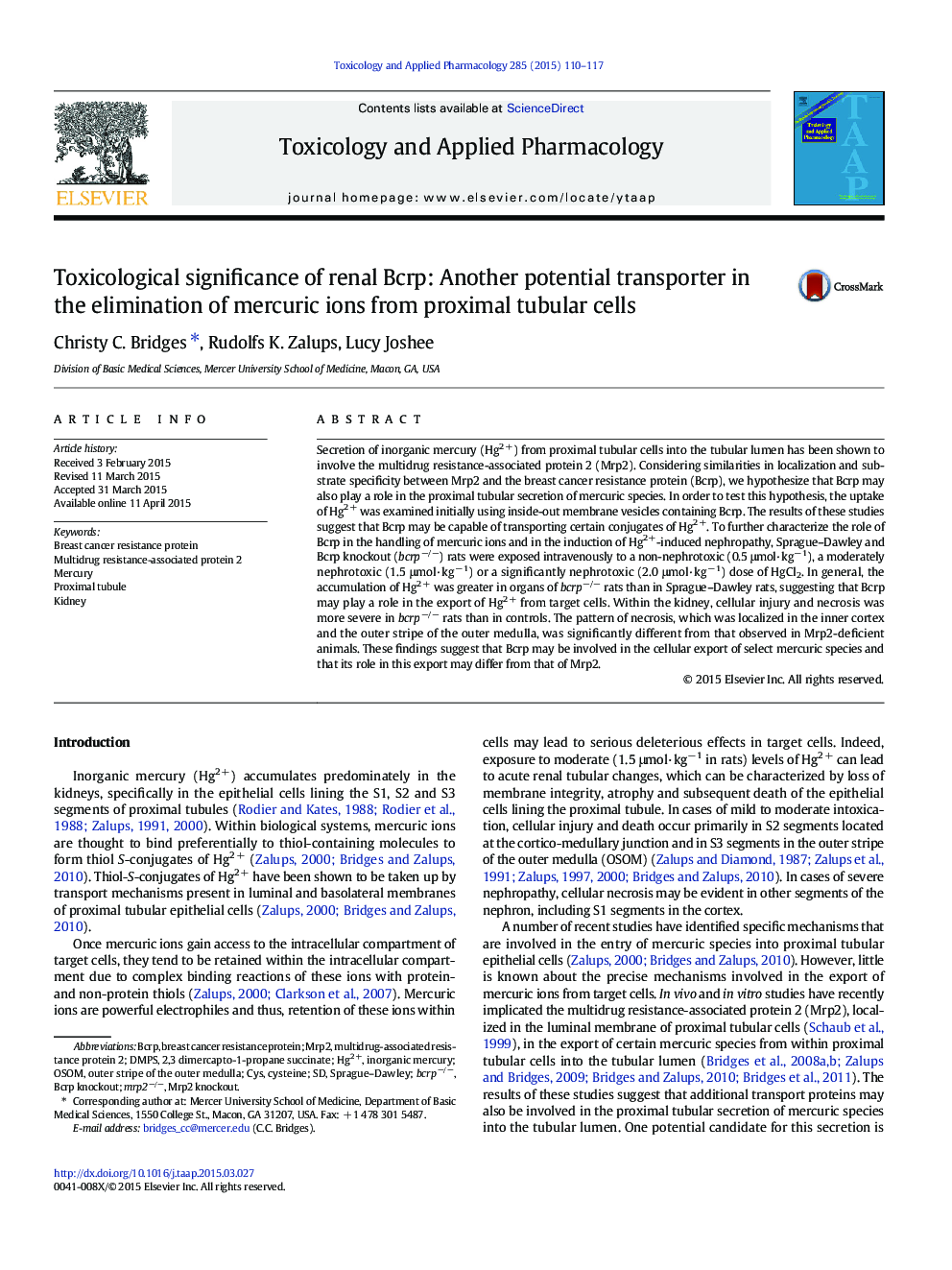| Article ID | Journal | Published Year | Pages | File Type |
|---|---|---|---|---|
| 2568437 | Toxicology and Applied Pharmacology | 2015 | 8 Pages |
•Bcrp may mediate transport of mercury out of proximal tubular cells.•Hg-induced nephropathy was more severe in Bcrp knockout rats.•Bcrp and Mrp2 may differ in their ability to transport Hg.
Secretion of inorganic mercury (Hg2 +) from proximal tubular cells into the tubular lumen has been shown to involve the multidrug resistance-associated protein 2 (Mrp2). Considering similarities in localization and substrate specificity between Mrp2 and the breast cancer resistance protein (Bcrp), we hypothesize that Bcrp may also play a role in the proximal tubular secretion of mercuric species. In order to test this hypothesis, the uptake of Hg2 + was examined initially using inside-out membrane vesicles containing Bcrp. The results of these studies suggest that Bcrp may be capable of transporting certain conjugates of Hg2 +. To further characterize the role of Bcrp in the handling of mercuric ions and in the induction of Hg2 +-induced nephropathy, Sprague–Dawley and Bcrp knockout (bcrp−/−) rats were exposed intravenously to a non-nephrotoxic (0.5 μmol·kg− 1), a moderately nephrotoxic (1.5 μmol·kg− 1) or a significantly nephrotoxic (2.0 μmol·kg− 1) dose of HgCl2. In general, the accumulation of Hg2 + was greater in organs of bcrp−/− rats than in Sprague–Dawley rats, suggesting that Bcrp may play a role in the export of Hg2 + from target cells. Within the kidney, cellular injury and necrosis was more severe in bcrp−/− rats than in controls. The pattern of necrosis, which was localized in the inner cortex and the outer stripe of the outer medulla, was significantly different from that observed in Mrp2-deficient animals. These findings suggest that Bcrp may be involved in the cellular export of select mercuric species and that its role in this export may differ from that of Mrp2.
